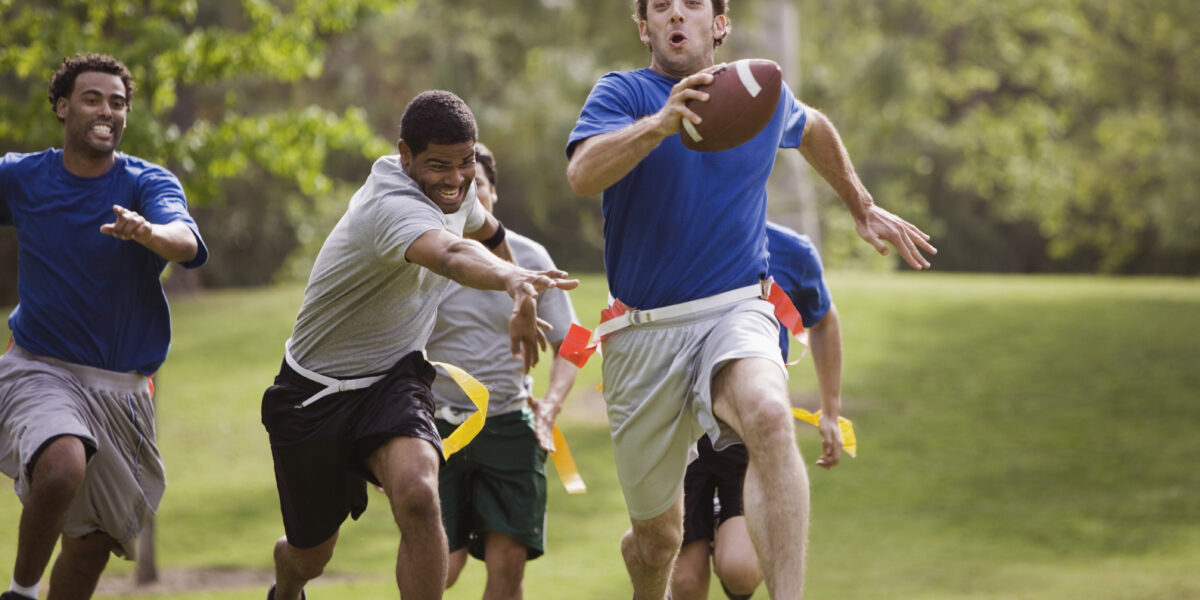Most of us aren’t making a career out of playing on our recreation league pickleball team, swimming laps after work or racing in 5Ks on the weekends.
But there is something that even the weekend warrior has in common with the professional athlete – a strong foundation is critical to overall health and success.
It’s amazing how much stronger you can be, how much higher you can jump how much higher your legs can go when you have a strong support and foundation.
Keep these tips in mind as you break a sweat.
1. Different sports have different physical expectations
Just as a football player would be different from a long-distance runner, performance athletes — which encompass dancers, cheerleaders, gymnasts and figure skaters — are very different from a contact athlete or someone who plays with a racket.
Need a sports medicine consultation? Click here.
The expectations on their bodies are different, and that’s important to keep that in mind. For example, a lot of these performance athletes tend to be more flexible and have greater ranges of motion. It’s harder for them to stretch because they’re naturally more hypermobile.
Casual athletes also benefit from remembering this. If you play a certain sport or activity, you may have different physical abilities from someone playing another sport. Neither is better – it’s just good to keep in mind when you wonder why your marathon-running neighbor always smokes you in the local 5K.
2. Change it up to prevent injuries
Athletes don’t want to be injured. Neither do the rest of us. You can prevent ending up in my office with two words — cross training.
A regular fitness program with strength training, cardiovascular endurance and stretching can help you feel good as you work out — and reduce your risk of injury.
Cross training works multiple muscles in the body, which can reduce the risks of overuse injuries. It reduces boredom, which makes it more likely that you will stick with it.
It also helps with cardiovascular endurance, which is necessary to be able to skate or dance safely. Elliptical training is one example that is low impact. Swimming and biking also help build great cardiovascular endurance.
Another benefit of switching it up — exercising different muscle groups can help improve performance.
3. Consider your shoes
I wish my performance athletes brought their shoes and their skates to their appointments. Some of the issues that they experience come from a poor fit of the shoe or the boot or just the way that they’re moving within that boot or shoe. Sometimes their injuries actually have simple fixes — such as if the shoe is too wide and they need a narrower box.
Their experience is a reminder to the weekend warrior to choose wisely when it comes to footwear. Supportive shoes can help protect you against common injuries associated with your type of workout. They also can help your knees, hips and back by cushioning your foot from heavy landings. If you can’t remember the last time you had a new pair of workout shoes, it’s a good idea to retire your current kicks.
4. Think of fitness as a lifetime activity
We often think about how it ends, but remember how you start, too. A dynamic warm-up that moves large muscles in controlled movements is a great way to get your body ready for game time.
The performance athletes I see didn’t get their abilities overnight. They spend years working on their skills and strengthening their bodies to perform.
The same is true for the person playing pickup basketball at the local basketball court. You’re going to perform better when you have some consistency to your activities. A regular fitness program that includes strength training, cardiovascular endurance and stretching can help you feel good as you work out and reduce your risk of injury.



